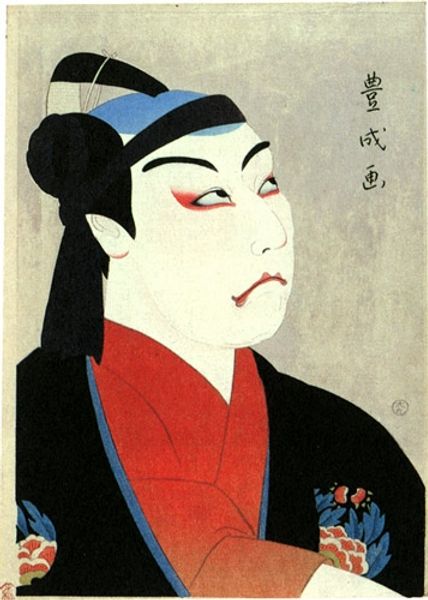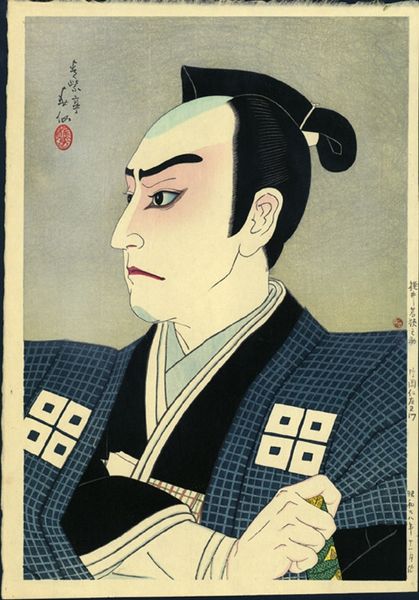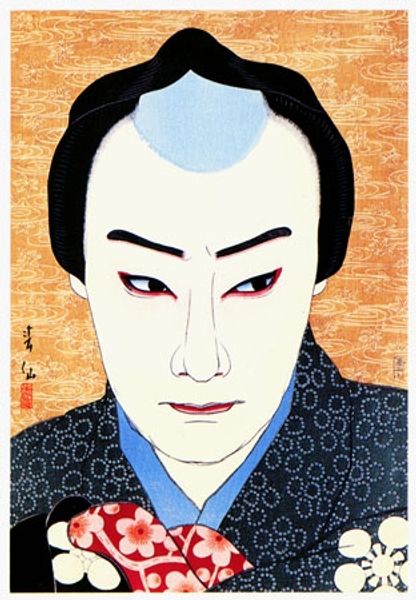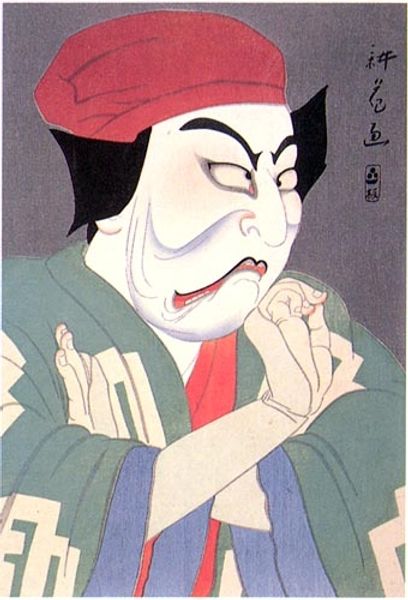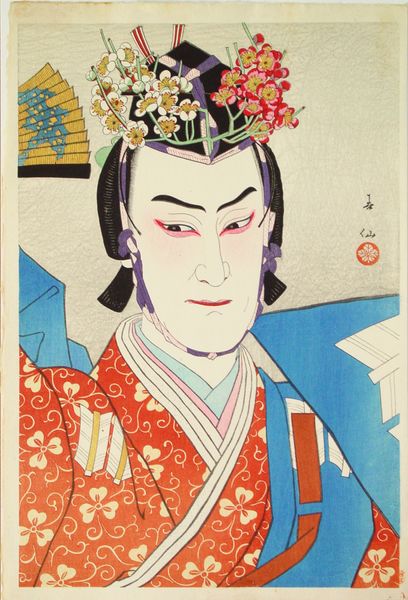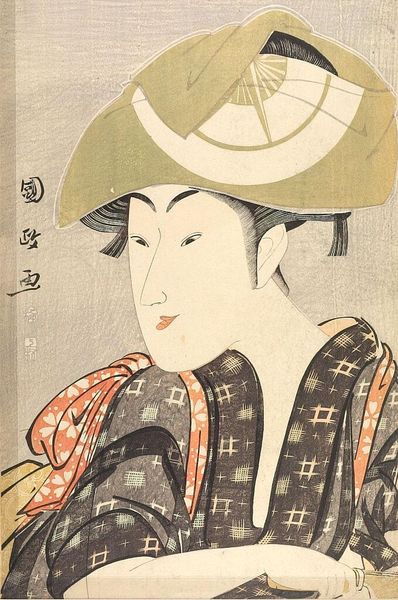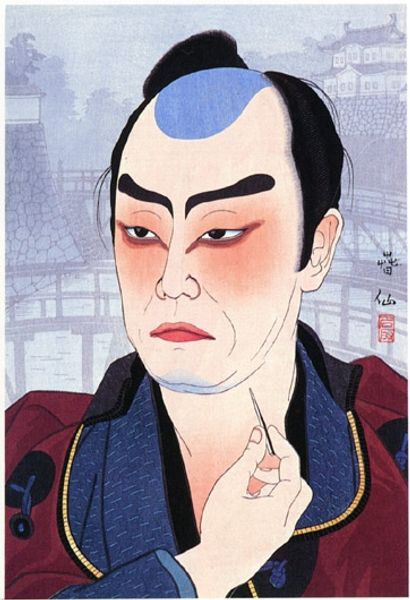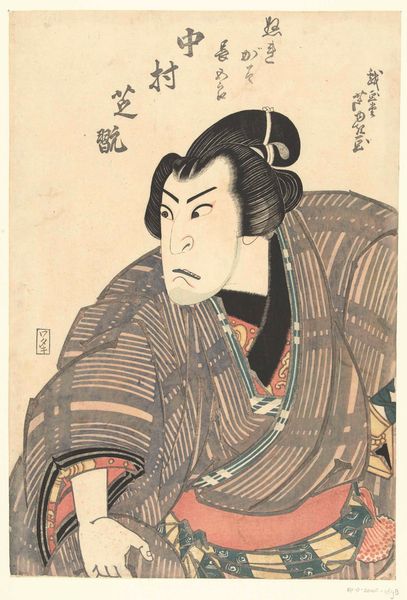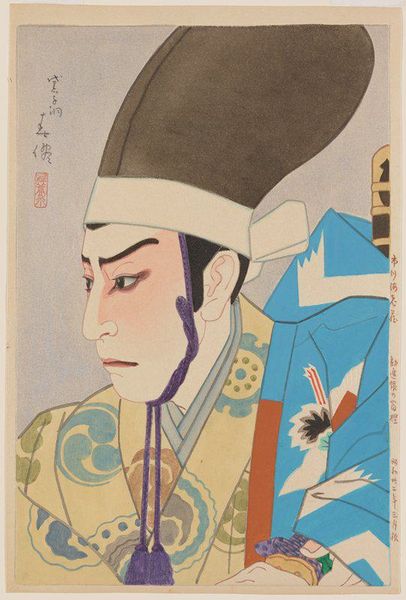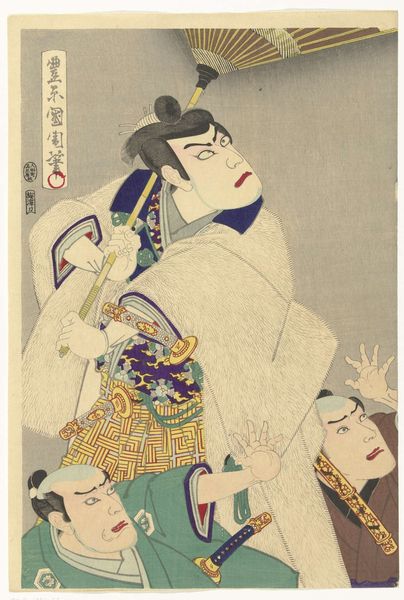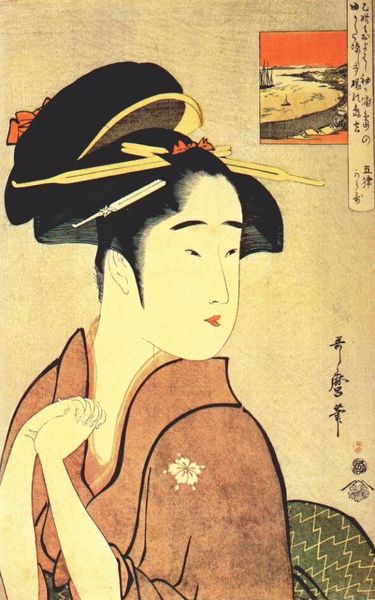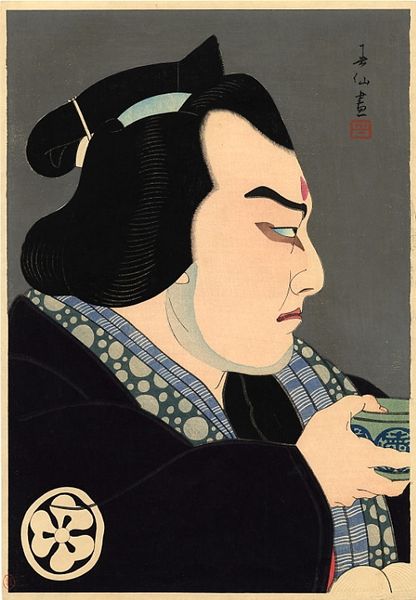
Copyright: Public domain Japan
Editor: This woodblock print, created in 1954 by Natori Shunsen, portrays Ichikawa Sadanji as Yoshiro in the Dance Modori-Kago. The face, with its strong lines and Kabuki makeup, strikes me as quite intense. What can you tell me about the significance of the imagery? Curator: It's interesting you pick up on the intensity. The Kabuki aesthetic is deeply rooted in symbolism. Look at the stark white face – oshiroi – and the bold red around the eyes. In Kabuki, white masks the human, allowing the actor to embody a role completely, almost as a vessel. Editor: So, the white face isn’t just make-up; it's more like a ritual mask? And what about the red around the eyes? Curator: Precisely! Oshiroi creates a blank canvas for transformation. The red around the eyes suggests heightened emotion. Think about what red often symbolizes across cultures – passion, anger, danger. Here, it points towards a character grappling with intense inner conflict, amplified by the blue costume. The symbolism resonates beyond mere visual appeal. Does it shift how you perceive his expression now? Editor: It does. It’s not just a stern look. There's a struggle, almost a tragic depth to it. So, reading these visual symbols allows us to understand not just what we see, but what the artist, and even the actor through the role, are trying to convey about humanity. Curator: Exactly! The Ukiyo-e tradition serves as a memory of culture – capturing these transient moments of performance and revealing enduring archetypes of emotion and conflict within them. Understanding the visual vocabulary unlocks a richer narrative. Editor: This makes me appreciate how much history and storytelling can be packed into a single image! Curator: And how consistent symbolic language can be across generations through visual art.
Comments
No comments
Be the first to comment and join the conversation on the ultimate creative platform.
